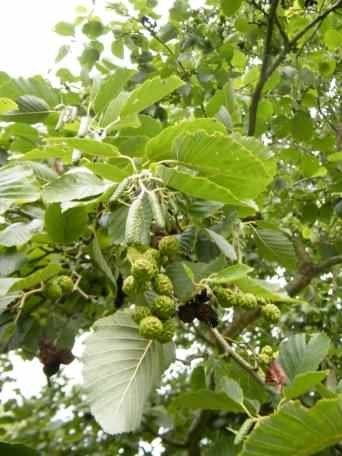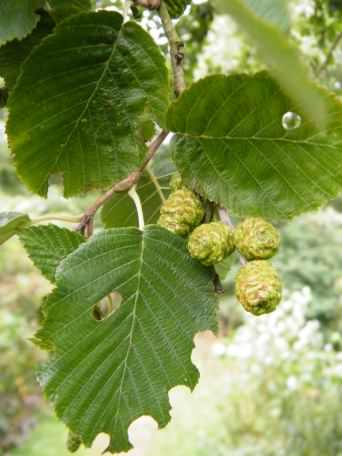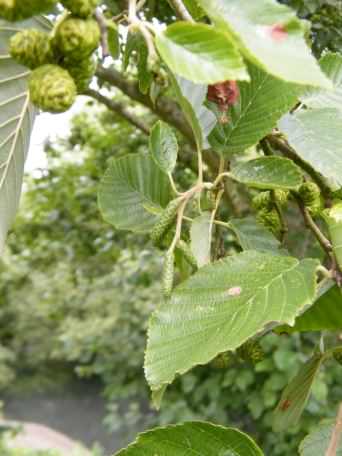


Click any photo for a larger image - photos ©2013–
Green Alder - Alnus viridis
Family - Betulaceae
A very common Alder species distributed widely across the cooler parts of the Northern Hemisphere although native to the Alpine region and mountains of south east Europe. Grows as a small tree 3–12m (10–40ft) tall with smooth grey bark. The leaves are shiny green with light green under surfaces, ovoid, 3–8cm (1–3in) long and 2–6cm (0.8–2.4in) wide. Female flowers (catkins) 1cm (0.4in) long in clusters of 3–10 on a branched stem appear in the late in spring after the leaves have emerged, unlike other Alders which flower before the leaves. They mature in the autumn producing small seeds 1–2mm (0.04–0.08in) long which are light brown with a narrow encircling wing. Male catkins are pendulous 4–8cm (1.6–3in) long.
Requiring good light, A. viridis is fast–growing shrub or bushy tree that grows well on drier poorer soils and reclamation sites although it is not drought tolerant. It colonises mountain areas after disturbance through its ability to re–grow with vigorous production of stump and root suckers. Sometimes used for afforestation on infertile soils which it enriches by means of its nitrogen–fixing nodules, while not growing large enough to compete with the intended timber crop. It grows with other tree species and can be used as a nitrogen fixing nurse species. A. viridis is classed as an invasive environmental weed in New Zealand.
BCP do not advise or recommend that Green Alder – Alnus viridis is eaten or used as an herbal remedy. Alnus viridis leaves have been used in traditional Austrian medicine externally or internally as tea for treatment of infections and fever.
 |
 |
 |
Click any photo for a larger image - photos ©2013– | ||
Site design ©1999– Brickfields Country Park - Privacy -